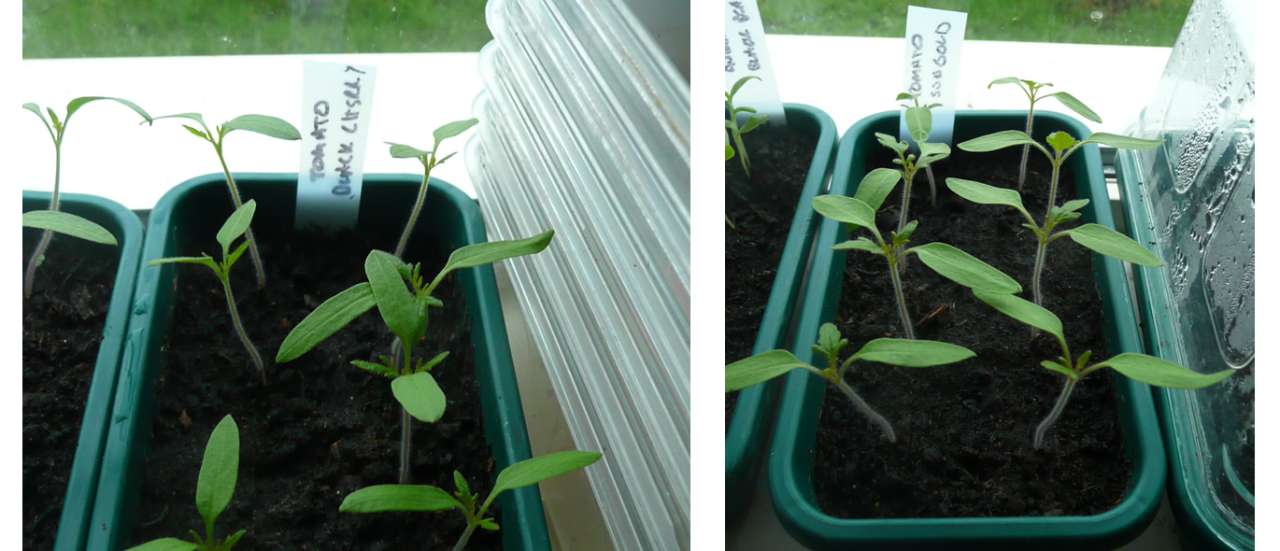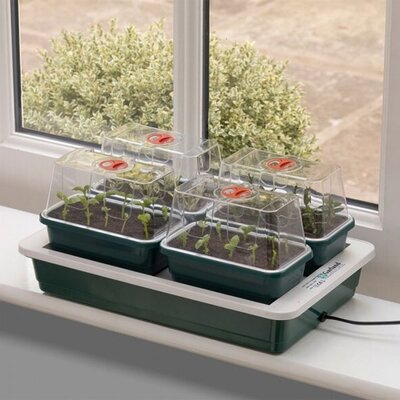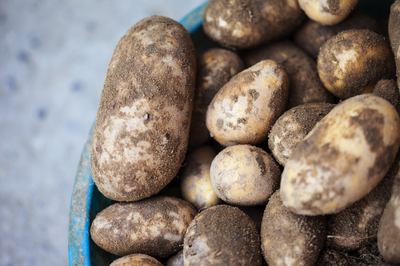In our climate you really do need a greenhouse, polytunnel or sunny conservatory if your looking to grow a wide range of tomatoes, peppers and aubergines, especially if, like me, you are based in the west of Ireland. There are some smaller bush varieties of tomatoes and chilli peppers that you could also grow on a south-facing sunny windowsill. If your fortunate to have any of these you really need to be sowing your seeds from now until around mid March to ensure they have a long enough season for the fruits to mature.
Tomatoes, peppers and aubergines are all from the Solanaceae family of vegetables, which also includes potatoes. Unlike potatoes however, these are all grown from seed and really need to be raised early, starting them off on a heating bench if you have one. Alternatively you can use a heated propagator or a heating mat placed on a sunny windowsill. It is possible to use an unheated propagator on a warm south facing windowsill, but these are probably best left until March as best results are achieved when they are at a constant temperature of 21°C. If you are just growing on a windowsill, it may be advisable to bring your plants further into the room at night, as, whilst the windowsill may be one of the warmest spots in the day, temperatures near a window can drop significantly at night and this can affect germination and growth.
Tomatoes
Seeds should be sown thinly in trays or pots, covered lightly with seed compost and firmed down gently, preferably with something flat that fits snugly into the pot or tray to apply even pressure. Seed compost should be kept moist (but not wet) at all times.
After about 10 days, your seedlings should emerge.

You should prick these out as early as possible and pot them on to a 7cm pot in a richer, multi-purpose compost. As you can see above the first pair of "true" leaves are starting to emerge which you can see have that distinctive tomato leaf shape as opposed to the initial seedling leaves (also known as embryonic leaves or cotyledons) which are narrow and smooth. You could even pot them on a little sooner once those first seedling leaves have fully opened.
At this stage, tease out the seedlings, being careful to only lift them by their seed leaves and not damage the stems. Have your pots of compost ready and make a deep hole in your compost to drop the seedlings into so that the seed leaves are just above the soil level. This is done because tomatoes can produce roots from anywhere along the stem and so this encourages strong root growth and gives them good anchorage. You can then just tap your pot a few times, so the compost fills in the hole around the stem, resisting the temptation to firm the compost in too much as this may damage your plants and compact the compost too much for the roots to spread out freely. Your potted on seedlings should remain at a warm temperature whilst the roots develop but unlike germination which requires temperatures of 21ºC, the seedlings will tolerate lower temperatures of around 16-18ºC, so I just tend to place them on a fold out table which I put up near a window that gets full sun.
Once your plants are well rooted (you should see the roots start to emerge from the bottom of the pot) these will need potting on and you may need to do this a couple of times before they can be transferred to their final position in a polytunnel or greenhouse. This would usually be around May-June after the last frosts are expected. If you're growing smaller bush varieties for the windowsill you can just pot them on to their final pot.
Supporting your tomatoes
Most tomatoes will need support and training once they get going and there are a number of methods you can use. If you have a tunnel or greenhouse, some lay the end of a string in the bottom of the pot before planting and tie the other end to an overhead wire or frame. Others, use some kind of stick support like bamboo canes. Either way, you will need to ensure support is provided as your plant grows. If your plants are particularly leggy, again the stems can be planted deep into the compost up to their first true leaves to encourage further root growth and strengthen the plant.
Side-shooting your tomatoes
Most popular varieties of tomato we grow are 'Cordon' or indeterminate varieties that will need side shooting as they develop. This simply means removing the shoot that appears between the main stem and the main leaves that grow from it. It is the extra leaf/shoot that appears between the stem and leaf that you need to remove. This puts more energy into flower and fruit production as opposed to growing a mass of foliage and stems with little fruit. For bush tomatoes (determinate varieties), side-shooting isn't necessary as these side-shoots will provide you with clusters of flowers which will eventually give you more fruit, unlike the side-shoots of cordon/indeterminate varieties which are generally unproductive.
If you follow these steps, you will be off to a good start and can look forward to picking your selected varieties of tomatoes from July through until October and, in warmer years, even November. Nothing tastes quite like a fresh tomato from the plant and the range of shapes, colours and most importantly, flavours you can get from growing your own is something you won't find in your local supermarket.
Peppers and Aubergines
To grow chilli peppers, sweet peppers and aubergines you start the seedlings off in exactly the same way was as you would tomatoes, potting the seedlings on to 7cm pots about a week after they have germinated. These can then be potted on to 10cm pots around 4 weeks later, or when you start to see the roots emerge from the bottom of the pot. If you have limited space in a propagator it's good to start sowing early so that you can stagger your seed germination over the 6 week window you have from Feb into March.
If the plants start to grow too upright, you can pinch out the growing shoot at around 30cm height for chillies and 50cm for aubergines to encourage a more bushy growth.
As with tomatoes, they shouldn't be brought out to their final position in a greenhouse or tunnel until around May-June, after the last frosts are expected. Depending on the variety you are growing these plants may also need supports as they develop. Unlike tomatoes however there is no need to side-shoot with aubergines or peppers.
Caring for your plants
Aside from the side-shooting of cordon tomatoes, the plant care for tomatoes, peppers and aubergines is generally the same and just requires regular watering. If you fail to maintain a regular watering regime, this can affect the fruits and this is when you can end up with tomatoes splitting or aubergine flowers dropping from the plant before they have started to develop fruit.
I have had varying success with aubergines if I'm honest but one tip I have picked up is with regard to pollination. If you want to ensure you get more fruits from your aubergines, it's a good idea to pollinate by hand. This just involves taking a brush, or even a cotton-bud with the end fluffed up a bit and rubbing on the yellow centre of one flower, to gather some of the pollen, and then rubbing that pollen onto the yellow centres of other flowers on the plant. This should greatly increase your yield.
When it comes to feeding, once the flowers start to form on any of these plants, you should start to use a high potash feed such as a general tomato feed. You can begin with adding feed about every two weeks and then maybe increase this to once a week once the plant is more vigorous and the fruits are plentiful.
Follow these general instructions and you should be picking delicious tomatoes, peppers and aubergines from late summer well into autumn.
We have a range of tomato, aubergine and pepper seeds available at Ardcarne Garden Centre as well as propagation accessories and should you need any advice, our friendly staff will be more than happy to help.
Happy Growing! - Web Ed.











